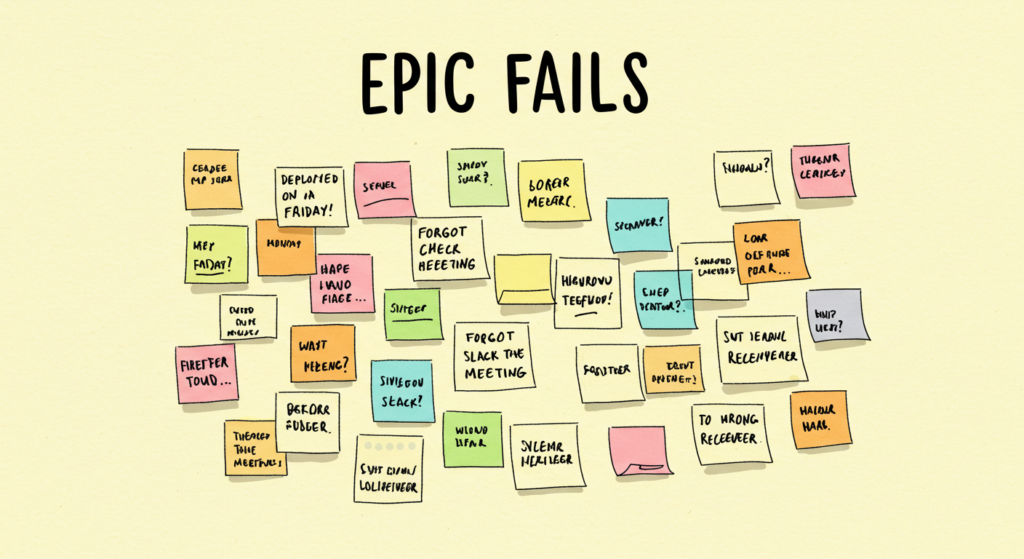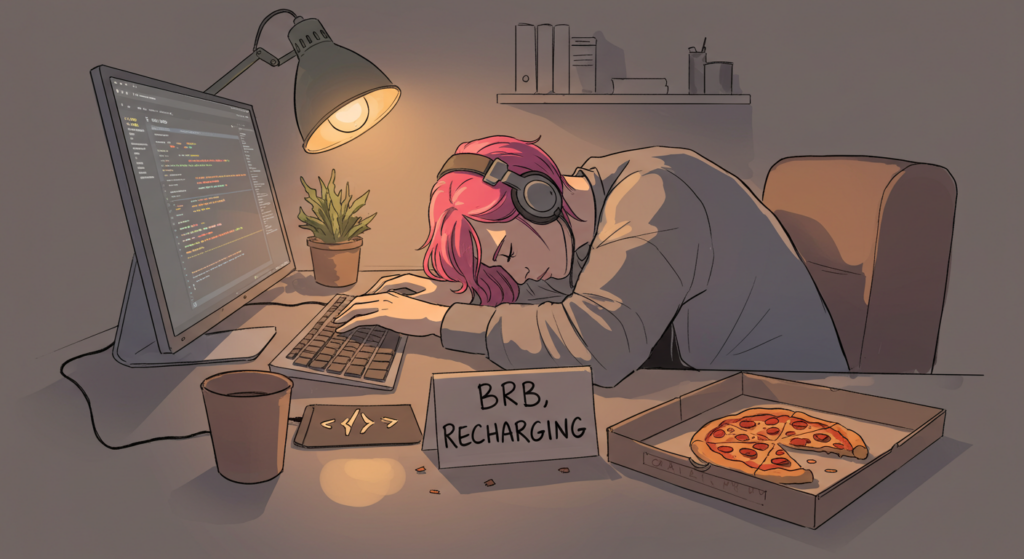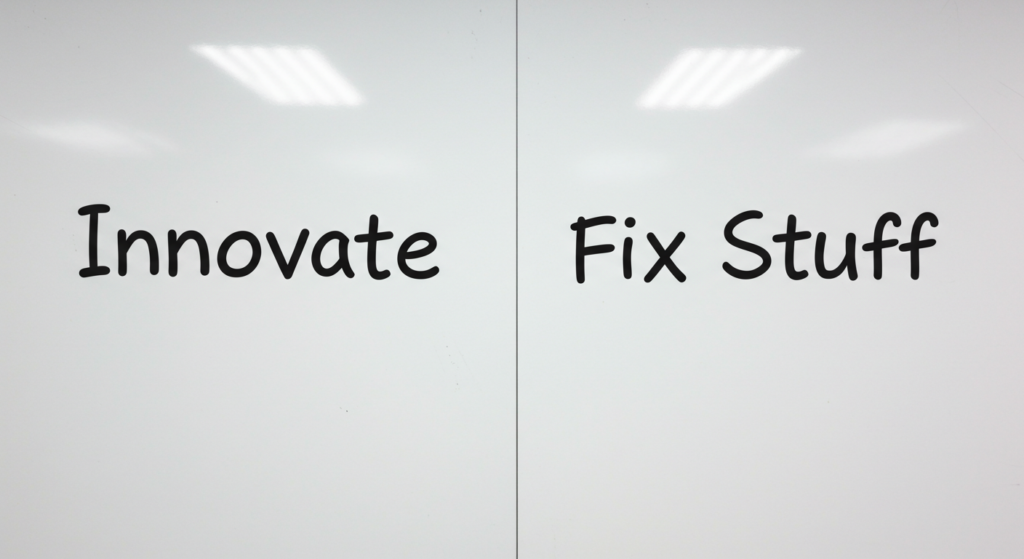Myth 1: They’re full of rock stars who don’t need help
The idea: Just hire the best and watch the magic happen.
Reality check: Even the most talented people can’t thrive if they’re stuck in a team that’s out of sync. High-performing teams aren’t just about hiring superstars—they’re about creating an environment where everyone can contribute, collaborate, and grow.
Think of it like a band: you don’t need five lead guitarists. You need a group that knows how to play together, even if the bass player occasionally misses a beat.

Myth 2: They never mess up
The idea: High-performing teams don’t fail.
Reality check: High-performing teams fail all the time. They just don’t let it derail them. Instead, they treat failure like an overly eager QA tester—annoying but valuable for finding the bugs.
In tech, this looks like testing, iterating, and improving. Did your sprint go off the rails? Great, now you know what to fix for the next one. The best teams embrace failure as part of the process, not the end of it.

Myth 3: Everyone’s always pumped and engaged
The idea: High-performing teams are 100% motivated, 100% of the time.
Reality check: Nobody’s running on all cylinders every day. Even in the best teams, engagement ebbs and flows—especially when burnout or unclear priorities creep in.
What makes these teams stand out is their ability to notice and address engagement dips early. Whether it’s a quick check-in, redistributing workloads, or just ordering pizza for the next sprint planning session, they find ways to keep things on track without pretending everyone’s a productivity robot.

Myth 4: Innovation is their middle name
The idea: High-performing teams are innovation machines, churning out groundbreaking ideas daily.
Reality check: Sure, innovation is cool, but constant innovation is exhausting. The best teams know how to balance dreaming big with maintaining what already works.
Sometimes it’s about optimizing an existing workflow or tweaking a feature to delight users. Because let’s be honest—what’s the point of building a shiny new thing if your core systems are held together with duct tape and hope?

Myth 5: The leader is the genius mastermind
The idea: Great teams have one brilliant leader who orchestrates everything.
Reality check: In real life, the best leaders are less “genius mastermind” and more “team hype person.” They don’t micromanage or hoard decisions—they empower their teams to lead, take ownership, and get things done.
Think of them as the DMs in Dungeons & Dragons: setting the scene, removing roadblocks, and cheering wildly when the team defeats the metaphorical dragon.

Myth 6: Data kills creativity
The idea: Data-driven decisions stifle creativity.
Reality check: Data doesn’t kill creativity—it supercharges it. High-performing teams use data to clarify priorities, validate ideas, and spark smarter solutions.
Data isn’t there to replace gut instincts; it’s there to keep those instincts from leading you off a cliff. Whether it’s sprint metrics, customer feedback, or performance analytics, the right data can be a creative team’s best friend.

What really makes high-performing teams shine?
Forget the myths of perfect harmony, endless innovation, or a single superhero leader. High-performing teams are:
- Quirky and real: They argue, fail, and occasionally laugh about the ridiculousness of a bug they created.
- Data-driven but human: They let data guide them without losing sight of creativity and empathy.
- Focused and flexible: They know when to innovate and when to fix what’s broken.
- Collaborative to the core: Leadership is shared, and success is always a team effort.
They’re not perfect—but they’re deliberate, resilient, and constantly evolving.

The bottom line
High-performing teams aren’t mythical creatures—they’re messy, hardworking, and full of personality. They thrive on trust, adaptability, and the occasional bad joke during standups.
The secret isn’t in chasing perfection. It’s in embracing the chaos, working smarter, and having a little fun along the way. Because when teams are real, intentional, and just the right amount of weird, that’s where the magic happens.

